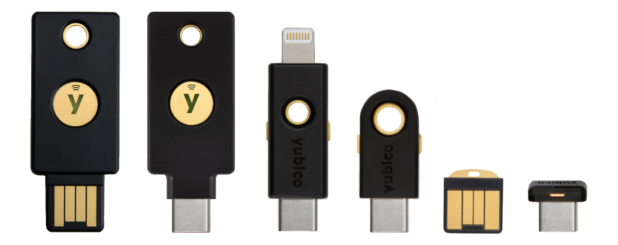Cloudflare wants to get rid of CAPTCHAs. They say it takes too much time to complete them, and want people to “prove their personhood” using a physical device.
They say it is anonymous, but once everyone’s used to what Cloudflare proposes, it will be easier to skip the privacy bit entirely.
From the Cloudflare blog:
Select all the buses. Click on bikes. Does this photo have traffic lights? As ridiculous as these questions are, you’re almost guaranteed to have seen one recently. They are a way for online services to separate humans from bots, and they’re called CAPTCHAs. CAPTCHAs strengthen the security of online services. But while they do that, there’s a very real cost associated with them.
Based on our data, it takes a user on average 32 seconds to complete a CAPTCHA challenge. There are 4.6 billion global Internet users. We assume a typical Internet user sees approximately one CAPTCHA every 10 days.
This very simple back of the envelope math equates to somewhere in the order of 500 human years wasted every single day — just for us to prove our humanity.
Today, we are launching an experiment to end this madness. We want to get rid of CAPTCHAs completely. The idea is rather simple: a real human should be able to touch or look at their device to prove they are human, without revealing their identity. We want you to be able to prove that you are human without revealing which human you are! You may ask if this is even possible? And the answer is: Yes! We’re starting with trusted USB keys (like YubiKey) that have been around for a while, but increasingly phones and computers come equipped with this ability by default.
Today marks the beginning of the end for fire hydrants, crosswalks, and traffic lights on the Internet.
…
CAPTCHA without Picture: Cryptographic Attestation of Personhood
“Hardware security keys are devices with an embedded secret that can connect to your computer or your phone”
From a user perspective, a Cryptographic Attestation of Personhood works as follows:
1. The user accesses a website protected by Cryptographic Attestation of Personhood, such as cloudflarechallenge.com.
2. Cloudflare serves a challenge.
3. The user clicks I am human (beta) and gets prompted for a security device.
4. User decides to use a Hardware Security Key.
5. The user plugs the device into their computer or taps it to their phone for wireless signature (using NFC).
6. A cryptographic attestation is sent to Cloudflare, which allows the user in upon verification of the user presence test.
Completing this flow takes five seconds. More importantly, this challenge protects users’ privacy since the attestation is not uniquely linked to the user device. All device manufacturers trusted by Cloudflare are part of the FIDO Alliance. As such, each hardware key shares its identifier with other keys manufactured in the same batch (see Universal 2nd Factor Overview, Section 8). From Cloudflare’s perspective, your key looks like all other keys in the batch.
There are at most three clicks required to complete a Cryptographic Attestation of Personhood. There is no looping, where a user is asked to click on buses 10 times in a row.
Yes, let’s just use these physical devices to “prove our personhood” and access the internet, and while we’re at it, why don’t we also use these devices to prove our coronavirus vaccination history?
 Daily Stormer The Most Censored Publication in History
Daily Stormer The Most Censored Publication in History





